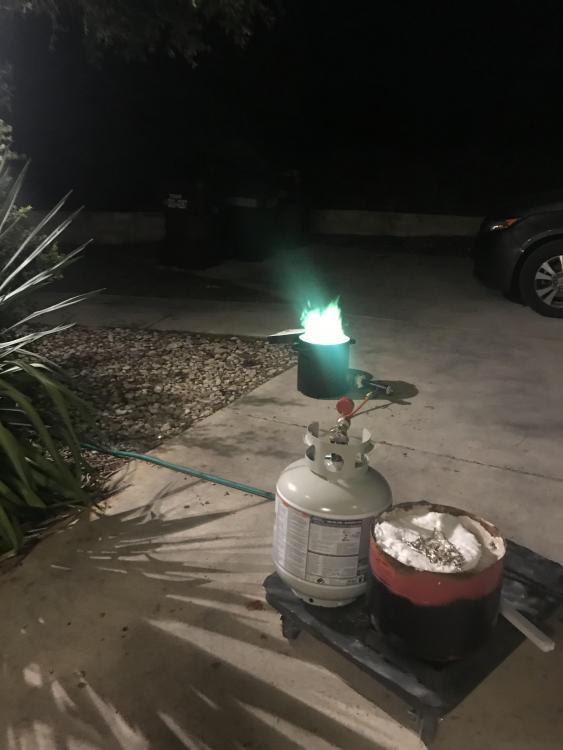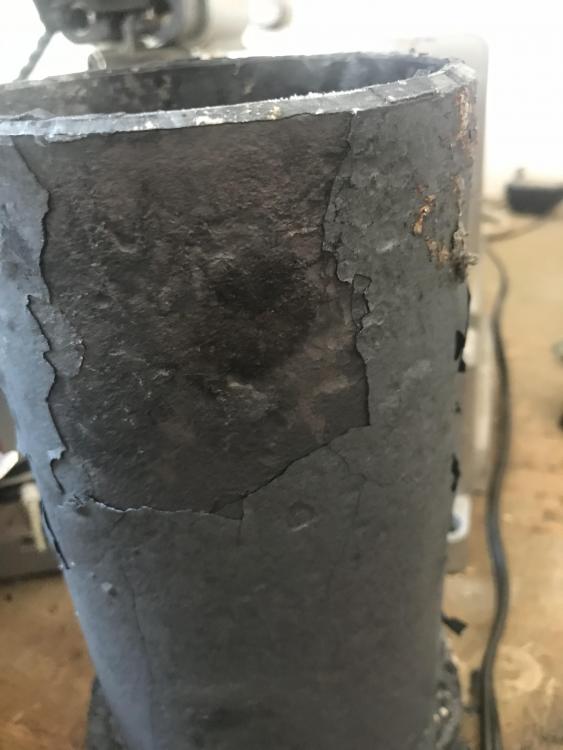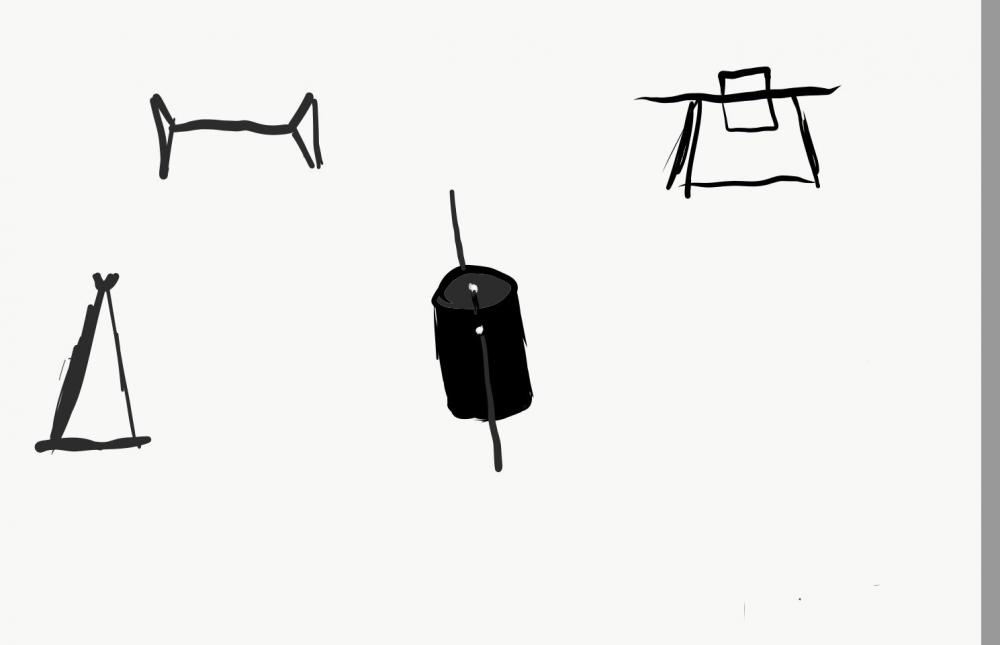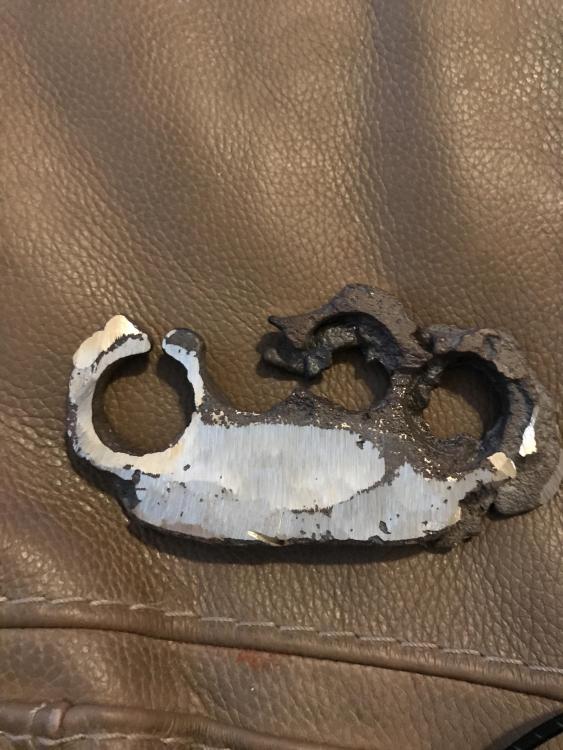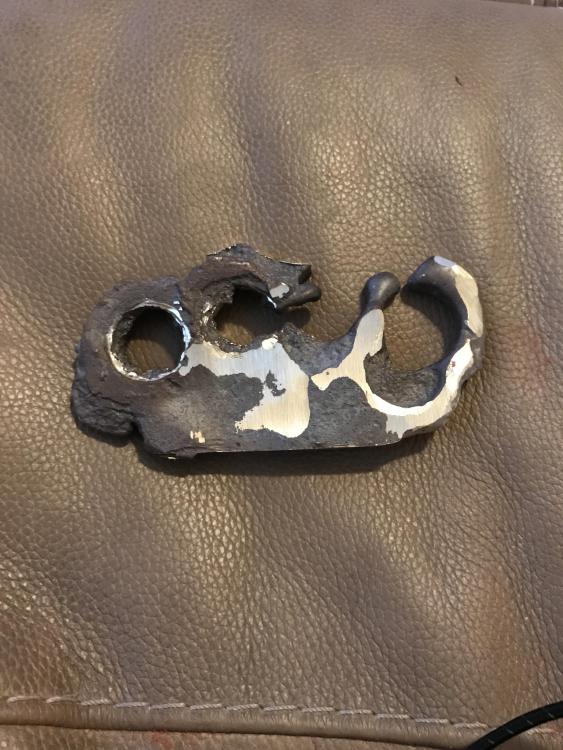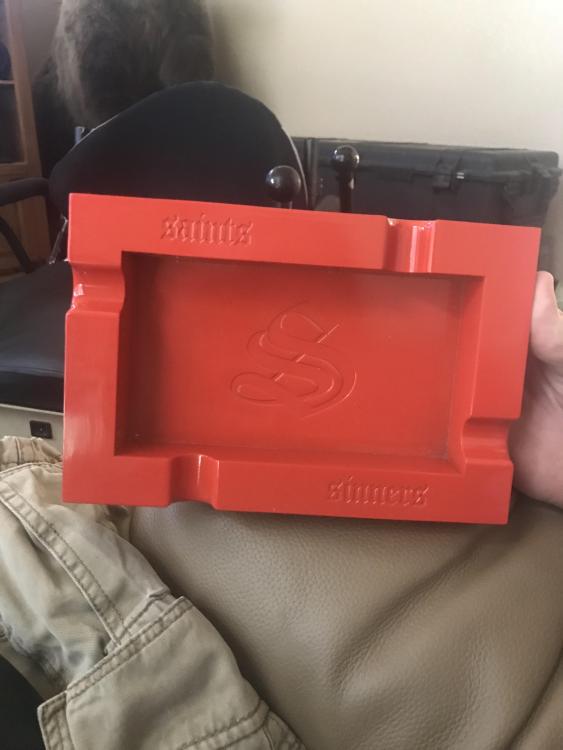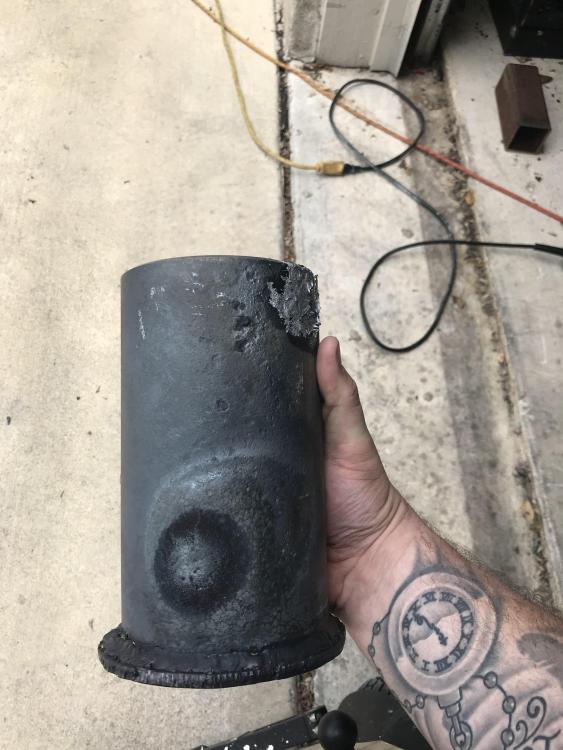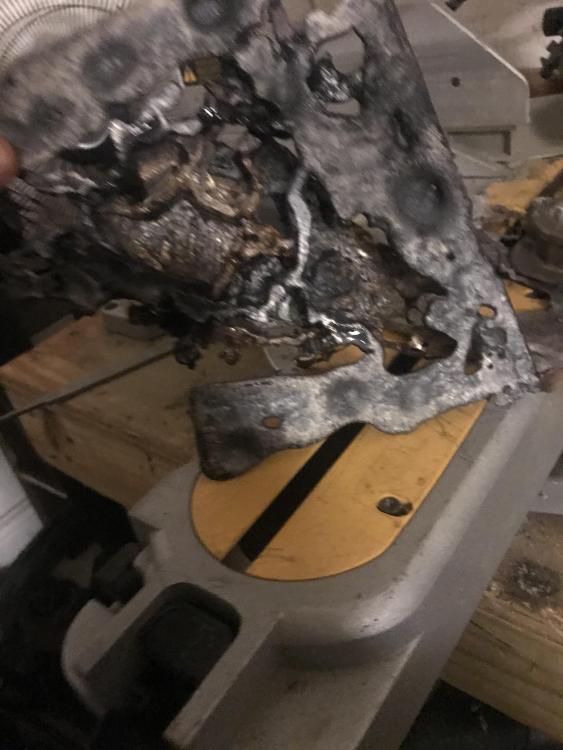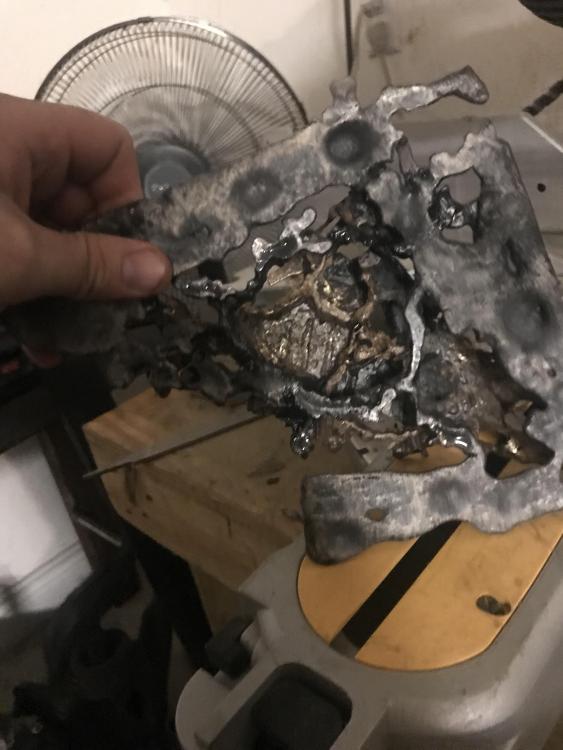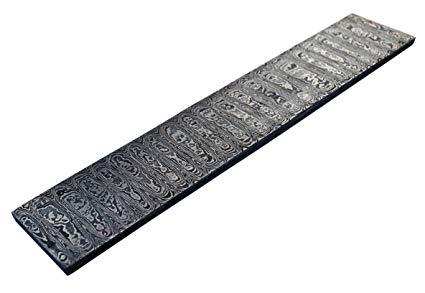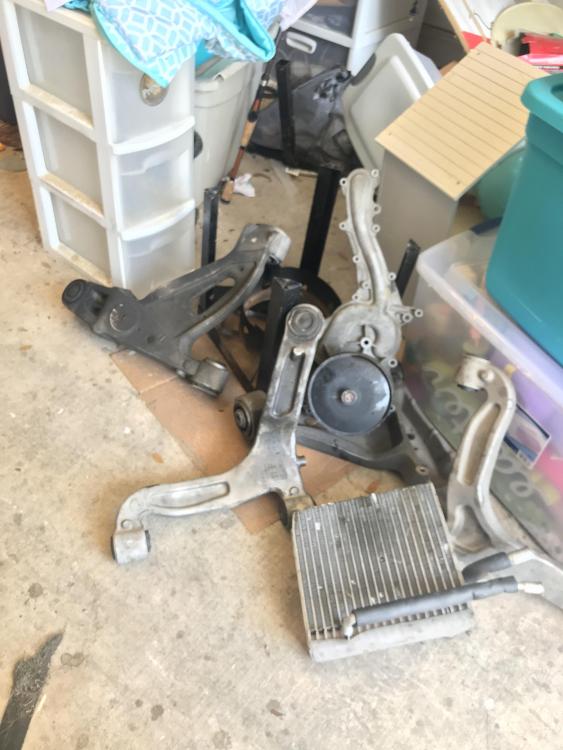-
Posts
31 -
Joined
-
Last visited
Profile Information
-
Gender
Male
-
Location
New Braunfels Texas
-
Interests
Forging, welding, gun smithing
Recent Profile Visitors
The recent visitors block is disabled and is not being shown to other users.
-

I’m ready for serious casting?
C.Read replied to Hans Richter's topic in Smelting, Melting, Foundry, and Casting
It's a 3M mask that is NIOSH approved: P100. It says it blocks zinc and lead dust and oil. https://m.lowes.com/pd/3M-Reusable-Sanding-Valved-Safety-Mask/1000027149 -

I’m ready for serious casting?
C.Read replied to Hans Richter's topic in Smelting, Melting, Foundry, and Casting
Thank you! I will read up on it. I have already been using a respirator, goggles, gloves, and my leather welding apron. -

I’m ready for serious casting?
C.Read replied to Hans Richter's topic in Smelting, Melting, Foundry, and Casting
Thomas- I guess I'll need to look it up. So is the scale made from the metal melting in the foundry and then oxidizing? Hand-held Definitely seen lots of the white power on the tools after my three burns of Brass. I will for sure have to look up ways to prevent it especially because I want to get into knife making. -

I’m ready for serious casting?
C.Read replied to Hans Richter's topic in Smelting, Melting, Foundry, and Casting
Is that the metal flaking off? Is the wall thinning because of it? -

I’m ready for serious casting?
C.Read replied to Hans Richter's topic in Smelting, Melting, Foundry, and Casting
Okay I was using the borax way wrong. I would get a punch with my gloves and sprinkle it in while the crucible was still in the foundry. As for brass, I melt outside with a respirator mask on. Plus I always try to stay up wind. I figure you can't be too safe. I need to get some fire bricks. The brick in the bottom of my foundry has broken in three different spots. My steel crucible sheds like a thin layer every time I fire it. It just has a a thin layer that is bubbled, looks like paint, but there is no pushing paint on the metal. I am going to make another steel crucible for the aluminum, so I can melt a lot. But the steel crucibles are heavy sands hard to pour so I'm going to weld up a pouring stand I saw in a YouTube video. For that crucible I'm going to drill holes at the top. Here is a drawing -

I’m ready for serious casting?
C.Read replied to Hans Richter's topic in Smelting, Melting, Foundry, and Casting
Hans - I am using borax. I just got a good skimmer shoo that should help. I put a little borax in at the beginning and the end. One problem I'm having is that when I try to put it in at the end the fire burns most of it up before I get it in to the crucible. Also I'm running a 8kg crucible but my foundry sashes it can take a 10. But if I make a bigger steel crucible that's taller than the graphite ones, I can melt more than that. I can use my current clay graphite crucible for brass going forward. Thomas- I'm not using a degasser -

I’m ready for serious casting?
C.Read replied to Hans Richter's topic in Smelting, Melting, Foundry, and Casting
Looking good Hans. I like my little foundry but I'm also looking to the future of getting a larger forge. I am wanting to make ash trays for a couple of my buddies cigar shops and I'm not sure if I can melt enough aluminum at one time to make them. I took a hiatus to try making some things and here are my results. My first try at casting was brass knuckles. They were not good but atleast it wasn't a total disaster. My second try was the ashtray is modeled after the red one ( I forgot to take pictures before I cut it up), I got the top 1/3 shaped perfectly but then I ran out of aluminum. So this is why I think I'm going to need a bigger foundry, or custom make a crucible like the one I use for brass (the steel one in the pictures I use for brass now). The clay graphite I got does not hold enough metal (you read that right, I used the new crucible and I cured it and it didn't break) So I thought things were going better so I tried using Styrofoam to redo the brass knuckles, this time it was a disaster. The metal somehow went through the sand and created a mess. That is what the picture of a mangled mess was. I seem to be able to pour ingots pretty good. So I have a buddy who has a cnc milling machine and is going to make me a negative of the ashtray for me and I can just melt and pour into steel like my steel muffin pan. So I'll shut up now and let y'all put your Windom on me. -

I’m ready for serious casting?
C.Read replied to Hans Richter's topic in Smelting, Melting, Foundry, and Casting
Thanks for all the advice! :). I got paid today so I'm going to order a crucible, casting sand and flux. Are any brands better than the next? Should I go with petrobond sand? -
Thomas- very true Buzz- I was thinking along the lines of buying something like in the picture. I've never done anything before, BUT I want to try hammering it out, getting my shape, and heat treating it my self. If I mess up, then hey it as a learning lesson. I would buy plain steel blanks to learn on before spending the money on demascus. Oh one more thing I have been heating up rebar and hammering it. Not going to do anything with it, but I figured it might be good practice.
-
I don't have to use found steel. I guess I was getting ahead of my self. I want to learn this art the right way. I guess watching forged in fire isn't vey realistic for a beginner. I guess one day I would like to have the skills to pick up scrap metal and turn out beautiful demascus blades. Is using blanks considered cheating (lol)? The reason I ask about cheating is because I have heard people in the past say stuff like he can't really make a knife he is just using a file blah blah. I want to be able to proudly say I made this.
-
I did see those. But I have a lot of standard size rebar. So I'll probably just weld a rebar to the blank.
-
That makes since. well since I'm mainly wanting to get blocks of steel to hammer out to knife blanks, What did you suggest? For the two pieces of rebar I have I'll just weld them on a longer piece of steel to work with.
-

I’m ready for serious casting?
C.Read replied to Hans Richter's topic in Smelting, Melting, Foundry, and Casting

